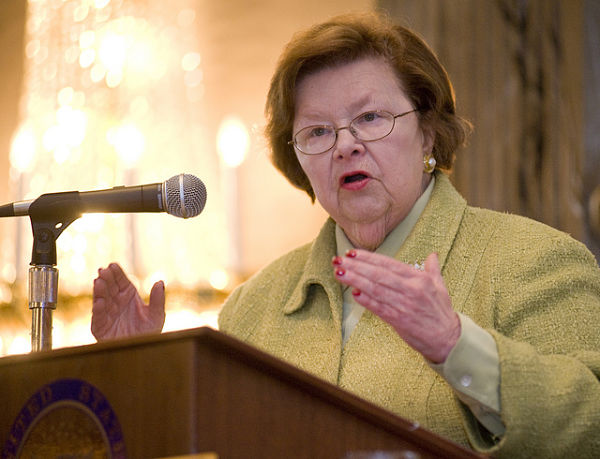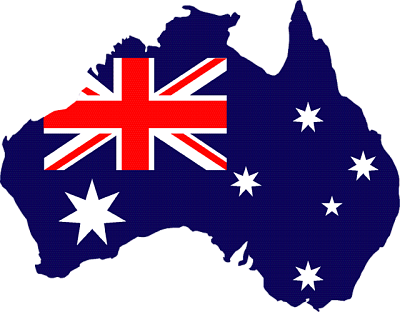Senate Appropriators Set Aside $7.5B for NSF

Senator Barbara Mikulski (Photo: NASA/Goddard Space Flight Center/Bill Hrybyk)
The key news for the social science community is that the National Science Foundation’s budget was listed as $7.51 billion, some $46 million above the same figure for the current fiscal year, but lower than what President Obama had sought. The National Science Foundation (NSF) pays for a majority of government-sponsored social and behavioral science research in the U.S.
The session by the Commerce, Justice, Science, and Related Agencies (CJS) subcommittee of the full Appropriations Committee was listed as a markup session, in which senators publicly examine – and offer amendments to – legislation under their purview, but today’s meeting saw no changes to the bill. Instead, senators mostly offered encomiums to Barbara Mikulski of Maryland, ranking Democrat and vice chair of the subcommittee, for what was her last CJS markup.
The bill in question actually covers a number of federal agencies in the departments of Commerce and Justice, as well as science agencies like NSF and NASA that stand alone. As a result, the only real policy-oriented talk touched on the nation’s spiking illicit use of heroin and opioid painkillers, and on NOAA’s spending of fisheries. It’s worth noting that the focus on opioid use focused almost solely on law enforcement-based approaches, with no mention made of social science-oriented solutions to the “epidemic.”
Chairman Richard Shelby, Republican from Alabama, noted that the CJS budget bill includes $56.3 billion in discretionary spending, a half billion increase from last fiscal year and $1.6 billion more than what the president sought. He added, however, that once a number of fiscal sleights of hand are removed, it’s actually $183 million below the president’s request.
Mikulski, observing that spending was essentially flat, said this appropriation is “snug, but acceptable.” She went on to make one of the few substantive mentions of NSF during the markup, saying she hoped its research would result in commercial applications. “I love when we win the Nobel Prizes,” she said, “but I also want to win the markets.” (NSF has a sterling track record of funding basic research that supports future Nobel prize winners – NSF funding , for example, has assisted every Nobelist in economics since 1988.)
The White House and NSF Director France Córdova asked Congress to increase NSF’s budget by 1.3 percent to $7.56 billion in the coming fiscal year – plus an additional $400 million in something called “mandatory research funding” – for a total of $8 billion. The amount the Senate panel offers includes $6.03 billion for research grants, and $880 million for NSF’s education and training programs.
The Bureau of the Census is also part of the CJS’ remit – Census is part of the Department of Commerce – and the bill funds that bureau at $1.5 billion, which is $148 million more than what was enacted in the current fiscal year but below Obama’s request for $1.63 billion to start gearing up for the next decennial survey in 2020. According to a summary from the Republican-led subcommittee, “The bill directs the Census Bureau to continue its efforts to hold the costs of the 2020 Census lower than that of the 2010 Census and to maintain its focus on activities that will make such savings possible.” A summary from Mikulski’s minority party said, “The 2010 Census cost nearly $13 billion, and the Bureau projects that repeating the same old paper-and-pencil Census in 2020 could cost more than $17 billion; however, new technologies like internet response have the potential to save more than $5 billion in 2020.”
There are a number of moving parts in federal budgeting, starting with a budget the president requests. That figure is then pored over by two sets of committee in both the House of Representatives and the Senate: an authorizing committee and an appropriation committee. The authorizing committees tell the agency how much money it can have, while the appropriation committees – one the House and Senate versions come to an agreement — then write the check.
To see how this plays out, look at last year, when the House appropriation committee decided it would parse out how NSF would spend the research money the foundation received (an unwelcome development for social scientists since the House majority Republicans are often dismissive of social science’s value). The Commerce Justice Science Appropriations Act approved by the House included language that would have meant a 16.5 percent cut for the NSF’s Directorate of Social, Behavioral and Economic Science. The Senate version included no cuts — and the final omnibus appropriations was a compromise, freezing 2016 spending for SBE at $272 million. Today’s hearing was the first official meeting on the budget, although Córdova has already testified before both House budgeting committees.
While no one is publicly talking about renewing that direct assault on social, behavioral and economic science spending this year, congressmen Democrat David Price of North Carolina and Republican Richard Hanna of New York have sent their colleagues a letter hoping to stave off such a possibility.
The next step on the Senate side is for the appropriations bill to be marked up by the full Senate Appropriations Committee, which is set for 10:30 EST on Thursday.



























































































